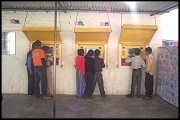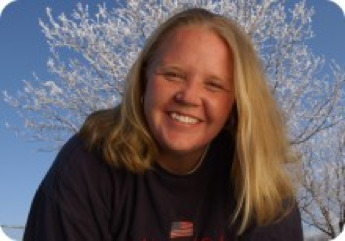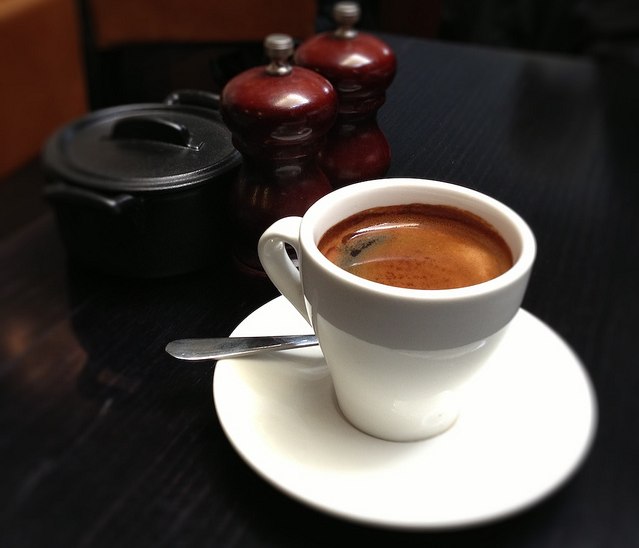
1001 Inventions: Discover the Muslim Heritage in Our World is an exhibition which began a tour of the UK this week at the Science Museum in Manchester. Paul Vallely, Associate Editor at the Independent, lists 20 of the most-influential inventions from the Muslim world.
“From coffee to checks and the three-course meal, the Muslim world has given us many innovations that we take for granted in daily life.”
Here are the top Muslim achievements that have shaped our world, according to the curators:
1. Legend tells of an Arab goat herder who noticed their change in mood when his goats ate a certain berry. He boiled the berries and came up with the first coffee.
2. The ancient Greeks thought light emitted from the eye (like a laser) causing us to see. It was a Muslim mathematician in the 10th Century that instead realized light entered into the eye. Astronomer and physicist Ibn al-Haitham invented the first pin-hole camera after observing light entering a hole in the shutters. The smaller the hole was, the clearer the image.
3. The game of chess we know today evolved from the players of Persia earlier than the 10th century. The rook comes from the Persian word rukh, meaning chariot.
4. The “first in flight” may not have been Wright. A thousand years before Kitty Hawk, Muslim poet, astronomer, musician and engineer Abbas ibn Firnas, made several attempts to construct a machine that would fly. First in 852, he used cloth stretched by wooden struts inventing what is thought to be the first parachute. At the age of 70, a machine of silk and eagle feathers held him aloft for 10 minutes after he leaped from a cliff. Baghdad airport is named after him.
5. It was Islamic ritual to bath and wash during times in Europe when bathing was considered bad for your health. Arabs originated the general recipe for soap we still use today: vegetable oils with sodium hydroxide and aromatic oils such as orange or thyme. England saw its first shampoo thanks to a Muslim.
6. Around the year 800, alchemy was converted into chemistry by Islam’s foremost scientist, Jabir ibn Hayyan. He invented many of the basic procedures and equipment still in use today – distillation, evaporation, crystallization, purification, filtration and oxidization. He discovered sulphuric and nitric acid. He invented the alembic still, for the creation of perfumes and alcoholic spirits. Ibn Hayyan was the founder of modern chemistry and a forerunner of the scientific method.
CHECK Out: From Slum Life in Uganda to Teen Chess Champion
7. The crank-shaft, one of the most critical mechanical inventions of all time, central to the automobile engine, was created by an ingenious Muslim engineer called al-Jazari. His device could elevate water for irrigation around the year 1200. His Book of Knowledge of Ingenious Mechanical Devices documents his inventive uses for valves and pistons, mechanical clocks and the first-ever combination lock. He is called the father of robotics.
8. The process of quilting was introduced to Europe after Crusaders saw Muslim warriors wearing dual-layer shirts with layers of straw in between. The quilted shirts were an effective form of protection in battle as well as a form of insulation. It helped the Crusaders avoid the chafing resulting from their metal armour. Quilting became a cottage industry in the colder climates such as Britain and Holland.
 9. The pointed arch of European Gothic cathedral fame was borrowed from Islamic architecture. It was superior to the rounded arch used by the Romans and Normans, and allowed for much grander buildings. Other inventions by Muslims included ribbed vaulting, dome-building techniques and rose windows. Muslim genius was also behind the building of Europe’s castles with their “arrow slits, battlements, a barbican and parapets”. The square towers and keeps of Europe proved to be inferior to the more easily defended round ones. “Henry V’s castle architect was a Muslim.”
9. The pointed arch of European Gothic cathedral fame was borrowed from Islamic architecture. It was superior to the rounded arch used by the Romans and Normans, and allowed for much grander buildings. Other inventions by Muslims included ribbed vaulting, dome-building techniques and rose windows. Muslim genius was also behind the building of Europe’s castles with their “arrow slits, battlements, a barbican and parapets”. The square towers and keeps of Europe proved to be inferior to the more easily defended round ones. “Henry V’s castle architect was a Muslim.”
10. The 10th century Muslim surgeon called al-Zahrawi designed many of our modern surgical instruments still in use today: scalpels, bone saws, forceps, and fine scissors for eye surgery. He established by accident that catgut used for internal stitches dissolves away naturally (his monkey ate his lute strings!) and determined it can also be used to encase capsules of medicine. In the 13th century, 300 years before William Harvey’s assertions, another Muslim doctor named Ibn Nafis charted the circulation of the blood. We have Muslim doctors also to thank for inventing anaesthetics of opium and alcohol mixes and hollow needles to extract from the eye cataracts, which is a technique still in use today.
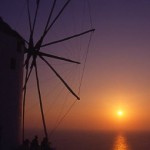 11. Each year, when the Arabian desert dried up, the only way for the people to survive was to perform the backbreaking tasks of drawing water and grinding grain by hand. In 634, a clever Muslim inventor built the first windmill, which tapped on the only source of energy the desert could offer – a wind which blew steadily for months at a time. The first windmills had six or twelve sails covered in fabric or palm leaves. They provided power to draw water for irrigation, and turn mill stones for grinding corn. Europe wouldn’t see its first windmill for another 500 years.
11. Each year, when the Arabian desert dried up, the only way for the people to survive was to perform the backbreaking tasks of drawing water and grinding grain by hand. In 634, a clever Muslim inventor built the first windmill, which tapped on the only source of energy the desert could offer – a wind which blew steadily for months at a time. The first windmills had six or twelve sails covered in fabric or palm leaves. They provided power to draw water for irrigation, and turn mill stones for grinding corn. Europe wouldn’t see its first windmill for another 500 years.
12. The technique of inoculation, the introduction of a pathogen into a living organism to stimulate the production of antibodies, “was not invented by Pasteur” but originated in the Muslim world and was introduced to the European world by an English ambassador’s wife by way of Istanbul in 1724. “Children in Turkey were vaccinated with cowpox to fight the deadly smallpox at least 50 years before the West discovered it“.
13. In 953, the Sultan of Egypt asked for a pen that would not leak all over his clothes and hands. The fountain pen was invented in which the ink would be held in a reservoir and be delivered to the paper (or papyrus) by gravity.
14. The style of our numerals (in the west) is Arabic and first appeared in print in the work of Muslim mathematicians around 825. From the Muslim world came algorithms and much of the theory of trigonometry, the word algebra and some of its principles. Modern cryptology owes its basis and discovery of frequency analysis to Al-Kindi. The achievements of Muslim math scholars were imported into Europe 300 years later by the Italian mathematician Fibonacci.
15. The concept of the three-course meal – “soup, followed by fish or meat, then fruit and nuts” was brought to Cordoba in the 9th century from Iraq, Ali ibn Nafi (also known as Ziryab – Blackbird). He also introduced crystal glasses, invented by a Muslim after experiments with rock crystal.
16. Thanks to the advanced medieval weaving techniques in the Muslim world, new dyes from Islamic chemistry and a developed sense of pattern born of the necessity to design without using images of Mohammad in Islamic art. Europe’s floors were unclean and unadorned until Arabian and Persian carpets were introduced.
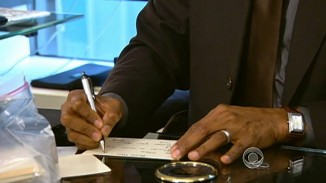 17. The idea for our modern checking accounts came from the Arab world. To avoid having to transport money across dangerous terrain, a written vow was honored to pay for goods upon delivery. “In the 9th century, a Muslim businessman could cash a check in China drawn on his bank in Baghdad.”
17. The idea for our modern checking accounts came from the Arab world. To avoid having to transport money across dangerous terrain, a written vow was honored to pay for goods upon delivery. “In the 9th century, a Muslim businessman could cash a check in China drawn on his bank in Baghdad.”
18. Ahead in Astronomy: 500 years before Galileo, Muslim scholars accepted that the Earth was a sphere. The astronomer Ibn Hazm in the 9th century said “The Sun is always vertical to a particular spot on Earth”, and therein found his proof. He and his colleagues were so accurate in predicting the Earth’s circumference that their calculations turned out to be less than 200km off. Al-Idrisi brought a globe to the court of King Roger of Sicily in 1139 spreading the ideas westward.
19. The Chinese invented gunpowder and fireworks, but Arabs first formulated the chemical process that led to its fitness for military battle. Muslim bombs terrified the Crusaders in the 15th century — both their rockets, and their torpedoes that could blow up ships.
20. Enjoying gardens: Medieval Europe only had gardens for food and herbs until the the Arabs spread the notion that gardens could be places for “beauty and meditation” — the first influence coming to Muslim Spain in the 11th century. Flowers that originated in Muslim gardens include the carnation and the tulip.
(Coffee photo by Katherine Lim, ultraklm on Flickr, CC license)
SHARE The Interesting History on Social Media…























 11. Each year, when the Arabian desert dried up, the only way for the people to survive was to perform the backbreaking tasks of drawing water and grinding grain by hand. In 634, a clever Muslim inventor built the first windmill, which tapped on the only source of energy the desert could offer – a wind which blew steadily for months at a time. The first windmills had six or twelve sails covered in fabric or palm leaves. They provided power to draw water for irrigation, and turn mill stones for grinding corn. Europe wouldn’t see its first windmill for another 500 years.
11. Each year, when the Arabian desert dried up, the only way for the people to survive was to perform the backbreaking tasks of drawing water and grinding grain by hand. In 634, a clever Muslim inventor built the first windmill, which tapped on the only source of energy the desert could offer – a wind which blew steadily for months at a time. The first windmills had six or twelve sails covered in fabric or palm leaves. They provided power to draw water for irrigation, and turn mill stones for grinding corn. Europe wouldn’t see its first windmill for another 500 years.
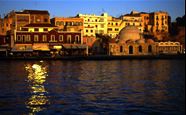


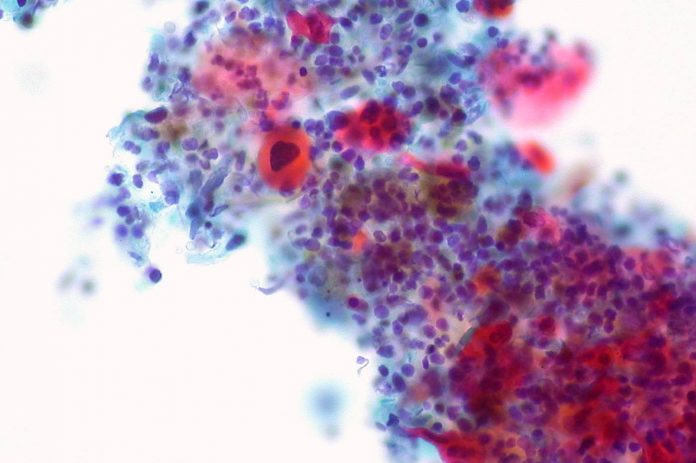


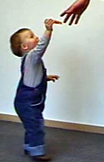
 What is human nature? Are we basically good, evil, or a little of both? Philosophers have debated this throughout the ages, but today science delivers some definitive news. Humans are naturally altruistic.
What is human nature? Are we basically good, evil, or a little of both? Philosophers have debated this throughout the ages, but today science delivers some definitive news. Humans are naturally altruistic.
